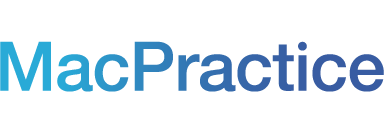Practices switch to another practice management or clinical software for a lot of different reasons. A lack of usability, difficulty implementing or using the software, and changing billing, clinical, or health population requirements are all commonly sighted as a reason to seek out a replacement software.

Unfortunately, switching software vendors can come with a whole new set of problems. Especially when it comes to data migration and implementation. Unlike MacPractice, many clinical software applications do not share the same database as the practice management system that is used for billing and revenue cycle management, adding extra challenges to the implementation process. Even other all-in-one vendors rarely provide a dedicated conversions service into the actual implantation of the software like MacPractice does.
However, almost 60% of healthcare practices will switch software at some point in their operation. With change likely, or even inevitable, how does one make a lasting change to avoid a cycle of new software systems in their practice?
Learn from the past
If you need to switch software systems, the good news is you probably have a list of problems with your old software that you’d rather not repeat. Since it isn’t your first software system, you’ll be a more experienced buyer and have a better framework for the features and workflows that will work for your practice. Make a list of negative things that bother you about your old software, and then translate that list into a list of positive solutions that you’ll look for in your new software.
Slow down
Take your time learning about any potential replacement software systems and ask a few software vendors the same questions. Find out how each of the software systems you are considering will provide positive solutions on your list.
Around 90 days of reflection is optimal. By thoughtfully reflecting on the problems your practice has had with software in the past in the context of finding new options to fix those problems, you can develop a better awareness of your needs. You’ll also be able to reflect on solving these problems in your day-to-day working environment, which can lead to several more ideas than simple list making alone.
There is More to Software Than Meets the Technical Eye
Many doctors and practice owners will be tempted to make a decision on a new software based on technology or the opinion of IT professionals alone, however this can lead to some unintended biases - especially if you’ve had a bad technical experience before.
Just because a new software addresses the technical problems in your old software, does not mean that it is necessarily completely better for your practice.
Consulting with every staff member that will use the new software is critical! The staff will have valuable input on ways their productivity could be enhanced with a better system. Not only that, but staff that don’t like using the software may not use it optimally and might feel biased against the new software, which can be a common reason for implementation failure in small practices.
Enjoy the Ride
A positive practice work culture that highlights the benefits of the new software, both in terms of immediate gains and long-term changes, can greatly enhance the brief but painstaking process of switching softwares. At MacPractice, we have a dedicated conversions team and Implementation Coordinator to help ease this process and connect you with all the resources you need.
